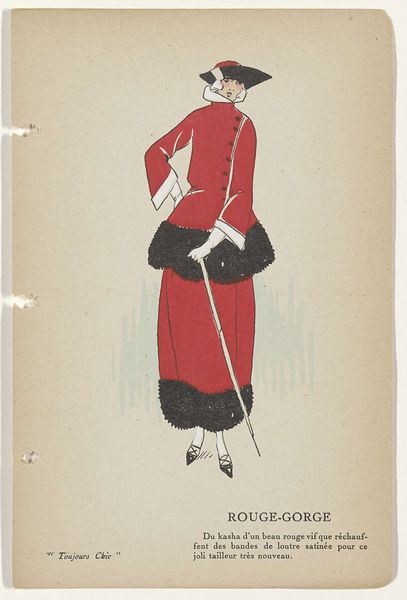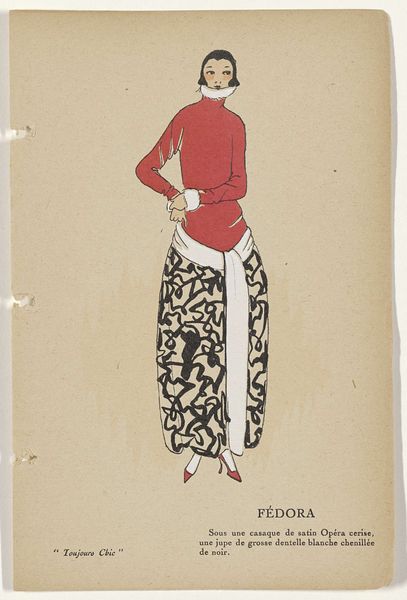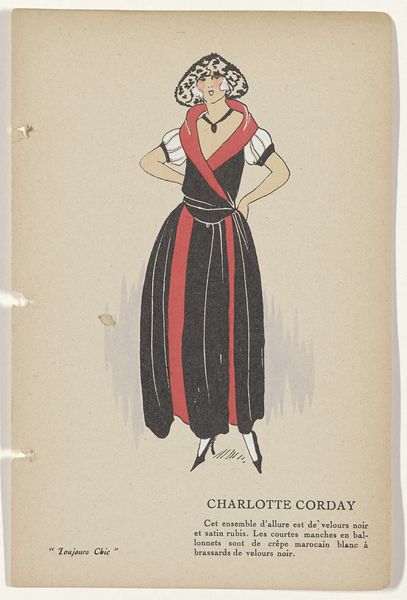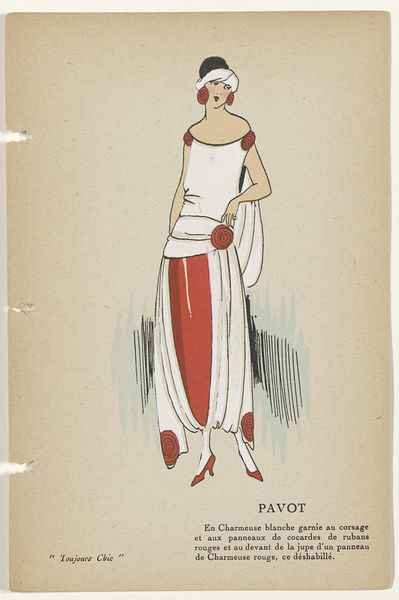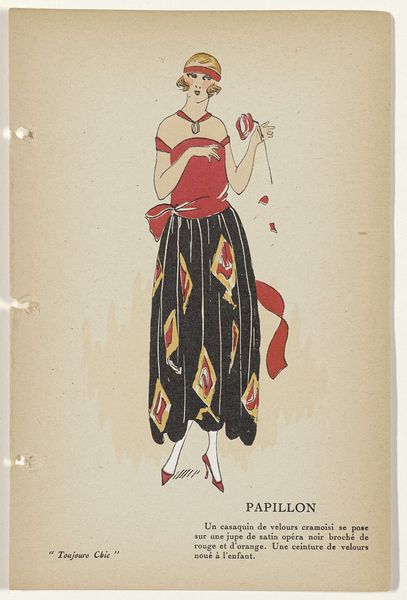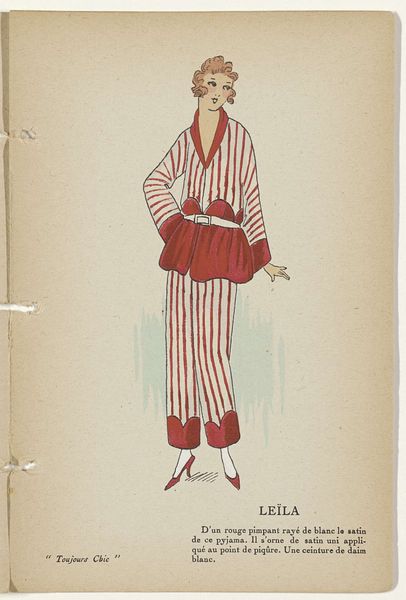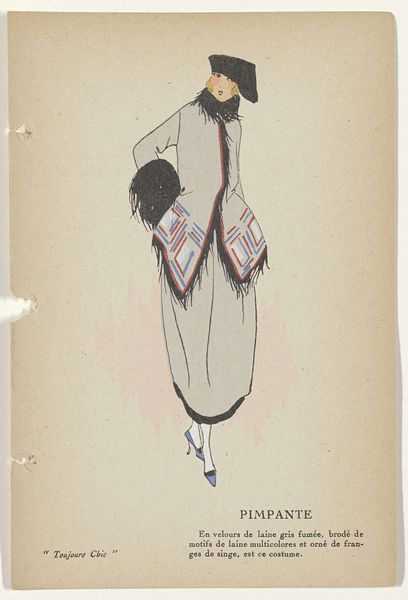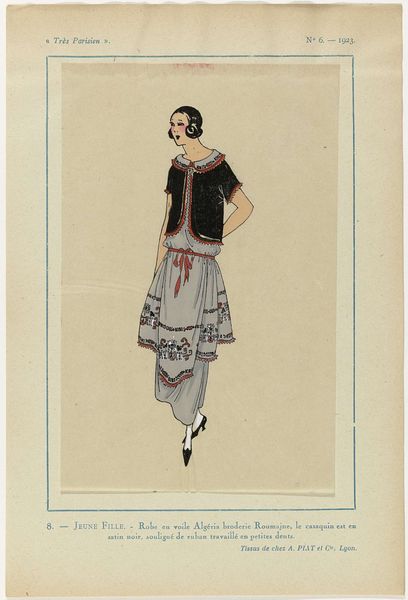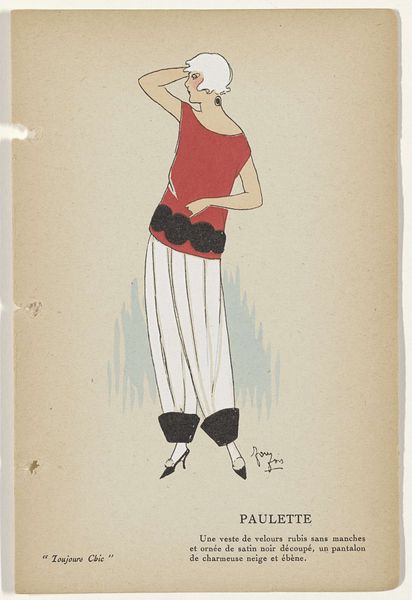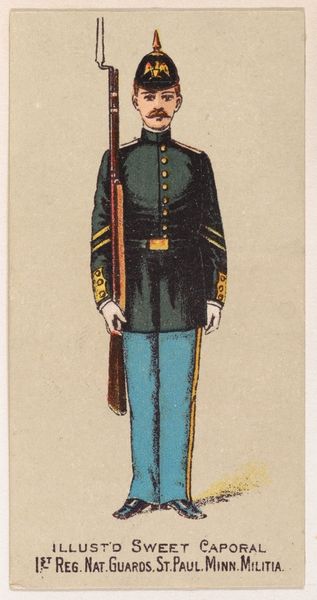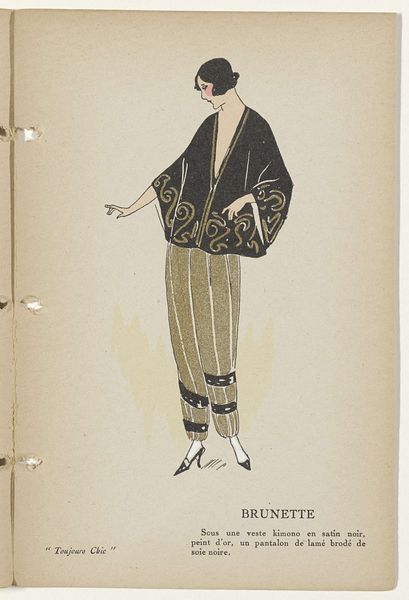
drawing, watercolor
#
portrait
#
art-deco
#
drawing
#
figuration
#
watercolor
#
historical fashion
#
watercolour illustration
Dimensions: height 180 mm, width 120 mm
Copyright: Rijks Museum: Open Domain
Curator: Here we have G-P. Joumard's "Toujours Chic Les Deshabillés, Hiver 1921-1922: Zaïb," a watercolor and drawing fashion illustration now residing in the Rijksmuseum. Editor: Immediately, the colors strike me—that bold red jacket juxtaposed with the flowing white trousers. There’s a lightness in the rendering, a clear focus on texture of cloth and form created with limited values and minimal shadowing. Curator: It's very much an Art Deco sensibility, capturing that interwar spirit of modernity. Note how the androgynous figure challenges pre-war gender norms, with a bobbed hairstyle that became so characteristic of the "garçonne" look. Editor: Absolutely, and I’m drawn to think about how these fashions represent shifting material conditions. Velvet and crepe de chine, these are markers of a certain level of consumption and leisure, newly accessible in some ways. And we must account for the production, of this object – from paper, pigments and illustration skill used in its making. Curator: The illustration almost becomes a study of social identity at the time; her clothes reflect the societal desire to move towards equality and emancipation. Fashion was crucial in visualizing this movement. This image is charged with statements, if one can read the nuances that define an epoch. Editor: Indeed, you're reading the historical semiotics of sartorial objects! As a Materialist I think more literally about the supply chains involved: How has technology impacted the industrial production of fabrics and clothes? These elements democratizing luxury in new ways as these goods become available to more consumer echelons than before. Curator: Considering Joumard's drawing today, it also gives rise to questions surrounding cultural appropriation. Her harem pants reflect an orientalist fad. To really reckon with that requires a self-reflexivity that situates us ethically toward images of cultural others in art and society. Editor: You're bringing up essential conversations, for sure! To think through how such design motifs are then re-consumed in ways detached from origin or history makes such cultural objects rife with tension and questions for modern production cycles. Curator: Agreed. It gives such work continuing potency. Editor: Definitely something to think over long after we leave the gallery.
Comments
No comments
Be the first to comment and join the conversation on the ultimate creative platform.
